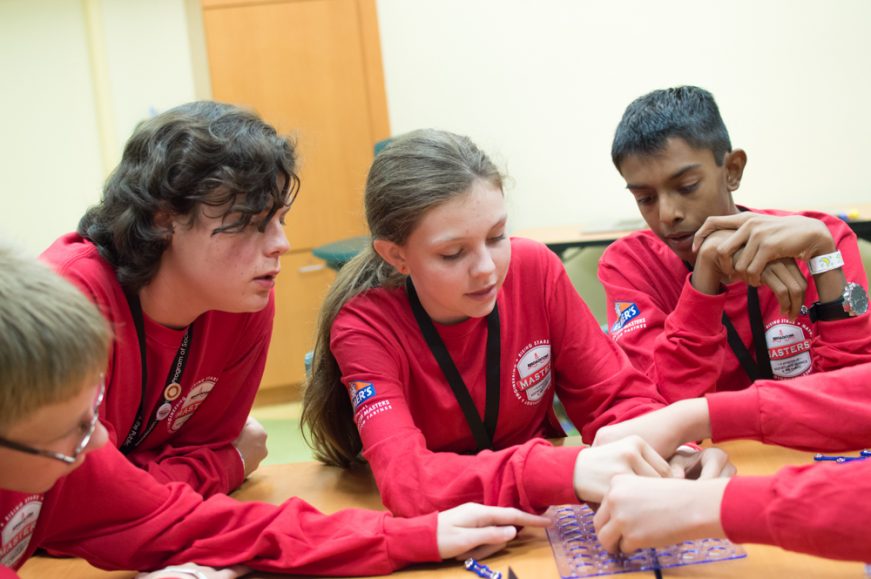Big Bang Theory – what the TV show leaves out
Broadcom MASTERS competitors learn the value of collaborating

NOT A LONE PURSUIT Today's science questions are usually too complicated for one person to handle alone. That's why judges at this year's Broadcom MASTERS judge the ability of middle-school students to work in teams of five.
By Sid Perkins
Anyone watching The Big Bang Theory, the most popular comedy series on American television these days, might get the impression that science is a rather lonely pursuit. Sure, Leonard and Sheldon must occasionally work together. (After all, some physics group once asked them to give a talk about a paper they had written together). And in the episode where Sheldon invited Raj to work for him, the two spent a hilarious few minutes staring intently — for what was supposed to be hours — at a white board as they looked for the answer to a tough math problem.
But mostly, the show focuses on the scientists’ lone pursuits. And while this show glorifies even the nerdiest of researchers, it misrepresents how most scientists and engineers work. Because few go it alone.
That wasn’t always true. In the early days of science, someone might design an experiment, run a series of tests and then see if the findings matched his or her initial expectation (called a hypothesis). According to legend, for instance, Galileo dropped objects from the Leaning Tower of Pisa to test his ideas about gravity. So he apparently could work alone. And one holdover of this lone-wolf idea, even the Nobel Prizes still gives awards in science to individuals, not teams.
But today’s science questions are usually too complicated for one person to handle alone. That means one or more teams may tackle an experiment. Sometimes, team members collaborate across time zones from labs in distant countries.
“Science has become so big, and so interdisciplinary, that there is no one individual — I don’t care how smart they are — that is able to fully understand all aspects of a problem,” says Bill Wallace. That means scientists and engineers must work together, this retired neuroscientist says. As a science teacher at Georgetown Day School, in Washington, D.C., Wallace has spent the last 16 years trying to get that across to his classes.
This week Wallace also leads a team of judges at the 2013 Broadcom MASTERS competition. MASTERS, which stands for Math, Applied Science, Technology, and Engineering for Rising Stars, is the premier national science competition for sixth-, seventh- and eighth-graders. A program of Society for Science & the Public, it is sponsored by the Broadcom Foundation, in Irvine, Calif.
Because teamwork is such a big part of modern science, the Broadcom MASTERS program judges the ability of middle-school students to work in teams of five. In fact, some three-fourths of a student’s final score will come from participating in team challenges.
“I like to say a student’s individual project is what got their foot in the door here at the finals,” says Paula Golden. “Then we judge them based on how well they can collaborate to innovate.” Golden is executive director of the Broadcom Foundation.
Judges this year assembled each five-student team with several factors in mind. They made sure that each team had a mix of girls and boys from different parts of the country. They also grouped the 30 students so the individual projects by each team’s members represented very different fields of science or engineering.
The 2013 team challenges included designing electrical circuits, analyzing data to figure out what caused a massive fish kill in a river, and deciphering which parts of stone carvings left by the Maya denoted numbers representing a year.
Winners of the Broadcom MASTERS competition will be announced at an awards dinner on Tuesday, Oct. 2.